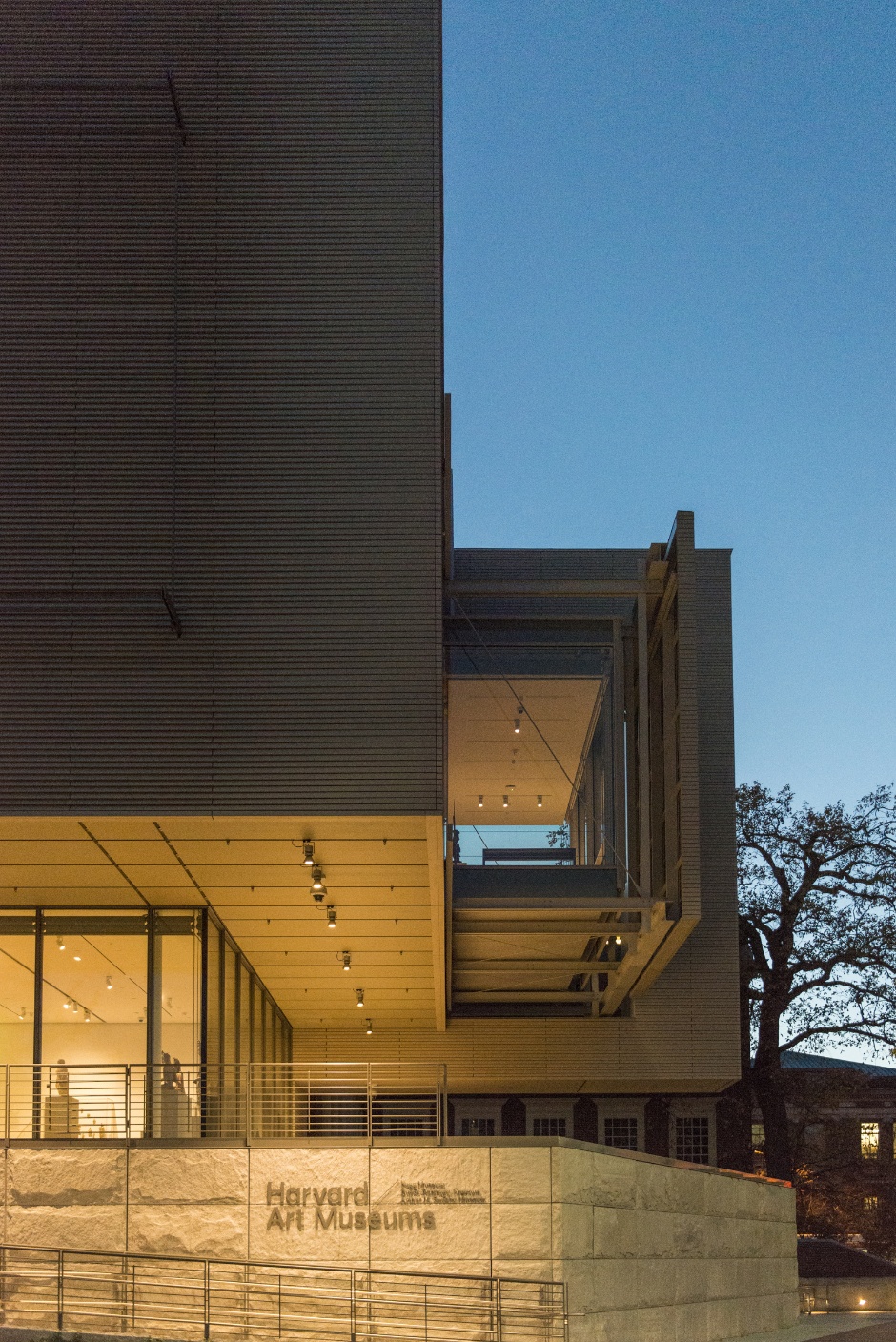The Harvard Art Museums, showing the new addition with the north Winter Garden gallery (October 25, 2014). Photo: Peter Vanderwarker.
__________________________________________________
HARVARD ART MUSEUMS
The Harvard Art Museums comprise three museums — Fogg, Busch-Reisinger, and Arthur M. Sackler — and four research centers — Straus Center for Conservation and Technical Studies, the Center for the Technical Study of Modern Art, the Harvard Art Museums Archives, and the Archaeological Exploration of Sardis. The Fogg Museum is dedicated to Western art from the Middle Ages to the present; the Busch-Reisinger Museum focuses on works from central and northern Europe with a special emphasis on the art of German-speaking countries; and the Arthur M. Sackler Museum is dedicated to Asian, ancient, and Islamic and later Indian art.
The new facility for the Harvard Art Museums—comprising the Fogg Museum, the Busch-Reisinger Museum, and the Arthur M. Sackler Museum—was designed by Renzo Piano Building Workshop. It opened to the public on November 16, 2014. The renovation and expansion of the 32 Quincy Street building brings the three museums and their collections together under one roof for the first time. The project is designed to create new resources for study, scholarship, teaching, conservation, and exhibition—and brings the public into one of the world’s great institutions for arts scholarship and research.
___________________
The Fogg Museum is Harvard’s oldest art museum, renowned for its holdings of Western paintings, sculpture, decorative arts, photographs, prints, and drawings dating from the postclassical period to the present. Its original building, designed by Richard Morris Hunt, opened in 1895 on the present site of Canaday Hall in Harvard Yard. In 1927, the museum moved to 32 Quincy Street to a building designed by Coolidge, Shepley, Bulfinch, and Abbott. It was at this site that the Fogg developed its reputation as the nation’s premier teaching museum.
Founded in 1903, the Busch-Reisinger Museum is the only museum in North America dedicated to the art of central and northern Europe, with a particular emphasis on art from German-speaking countries. After three Harvard professors of German literature published an article titled “The Need of a Germanic Museum at Harvard,” the Germanic Museum, as it was then known, opened its doors in Rogers Hall, a former gymnasium. In 1921 the Germanic Museum moved to Adolphus Busch Hall at 29 Kirkland Street, and in 1950 it was renamed the Busch-Reisinger Museum. The museum moved again in 1991, to 32 Quincy Street. Adolphus Busch Hall continues to house the Busch-Reisinger’s founding collection of plaster casts of medieval art, and is the venue for concerts on its world-famous Flentrop pipe organ.
The Arthur M. Sackler Museum holds one of the most significant collections of Asian art in the West. In 1912, Harvard professor Langdon Warner taught the first courses in Asian art at any American university. By 1977, Harvard’s collections of Asian, ancient, and Islamic and later Indian art had grown enough in size and importance to require a larger space for their display and study. The Arthur M. Sackler Museum, a new museum building at 485 Broadway designed by James Stirling, opened in 1985.
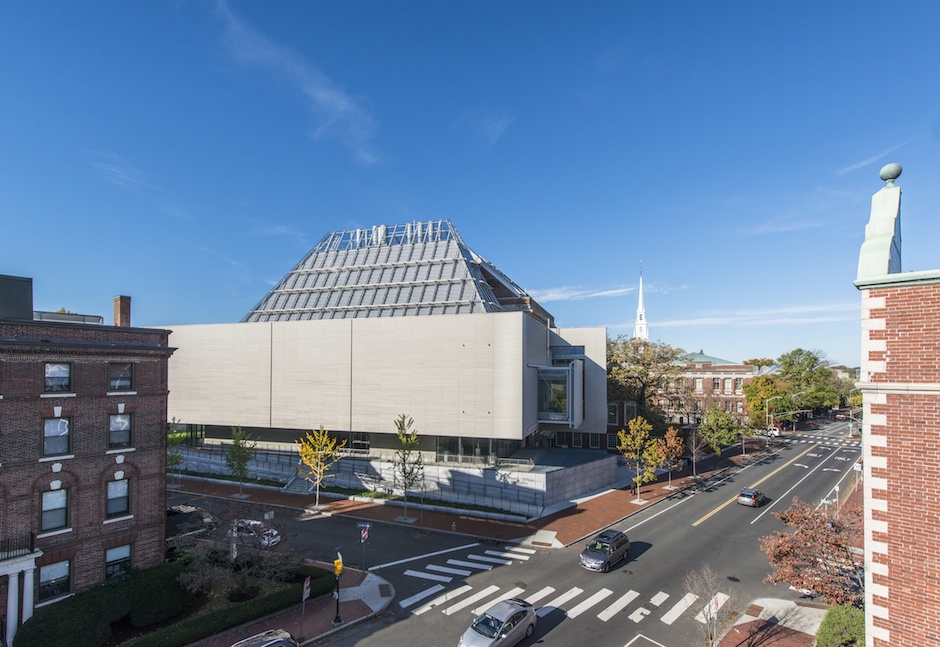
The Harvard Art Museums, showing the new addition (October 25, 2014). Photo: Peter Vanderwarker.
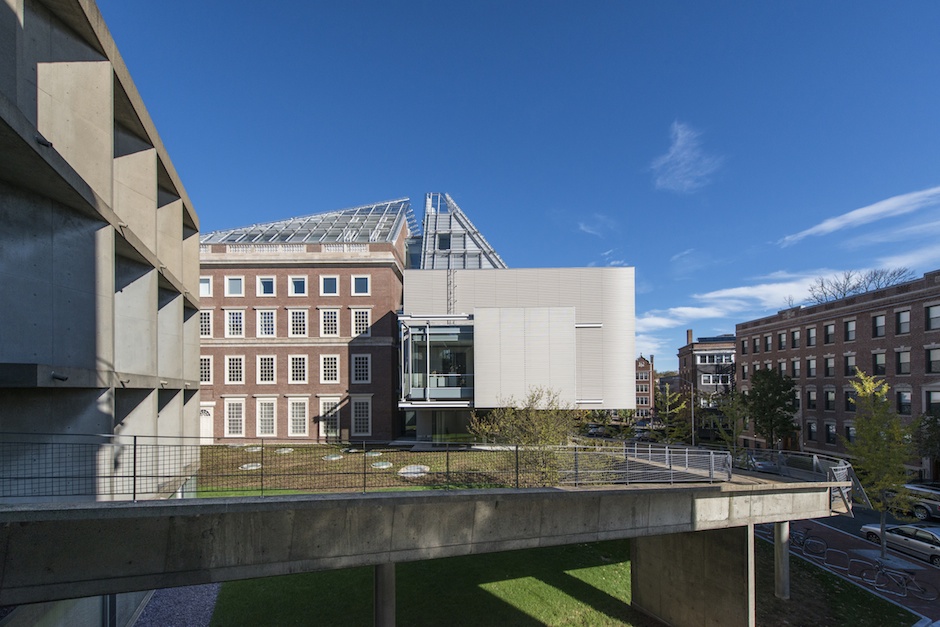
The Harvard Art Museums, showing the new addition with Le Corbusier’s ramp extending from Harvard’s Carpenter Center for the Visual Arts (October 25, 2014). Photo: Peter Vanderwarker.

The Harvard Art Museums, showing the new addition with the south Winter Garden gallery and Le Corbusier’s ramp extending from Harvard’s Carpenter Center for the Visual Arts (September 18, 2014). Photo: © Nic Lehoux.
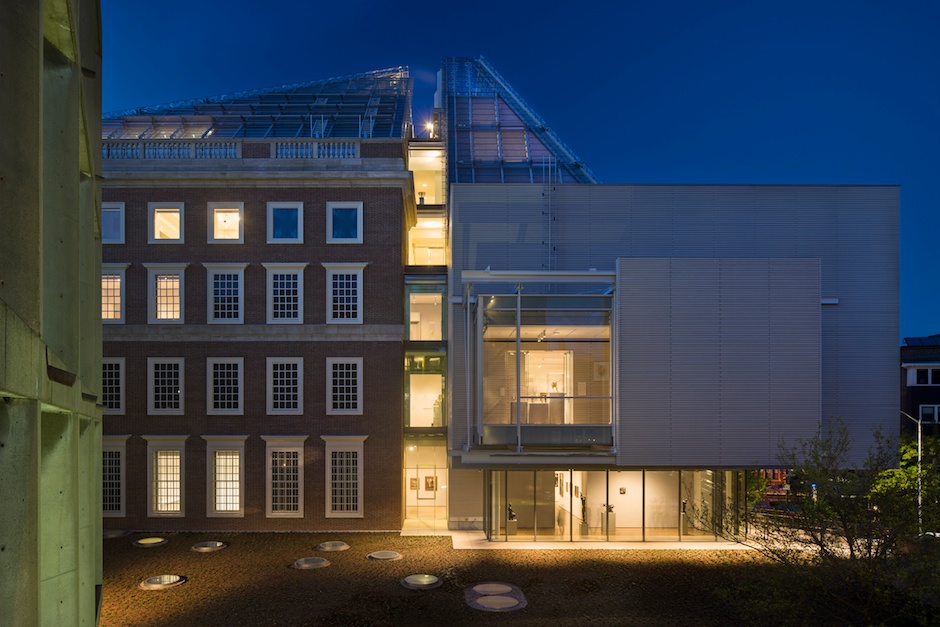
The Harvard Art Museums, showing the new addition with the south Winter Garden Gallery (September 19, 2014). Photo: © Nic Lehoux.
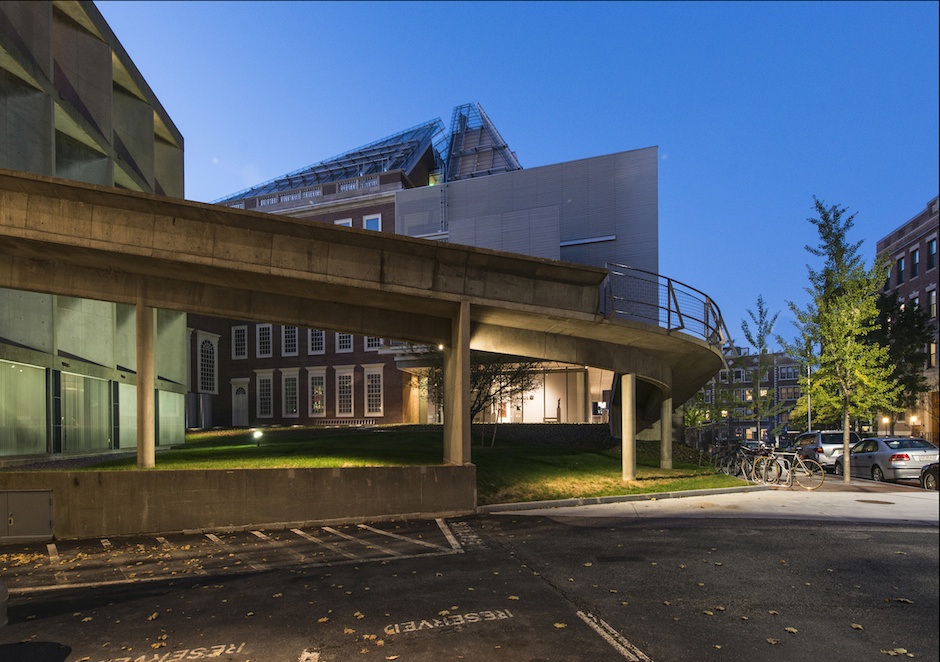
The Harvard Art Museums, showing Le Corbusier’s ramp extending from Harvard’s Carpenter Center for the Visual Arts (October 5, 2014). Photo: Peter Vanderwarker.
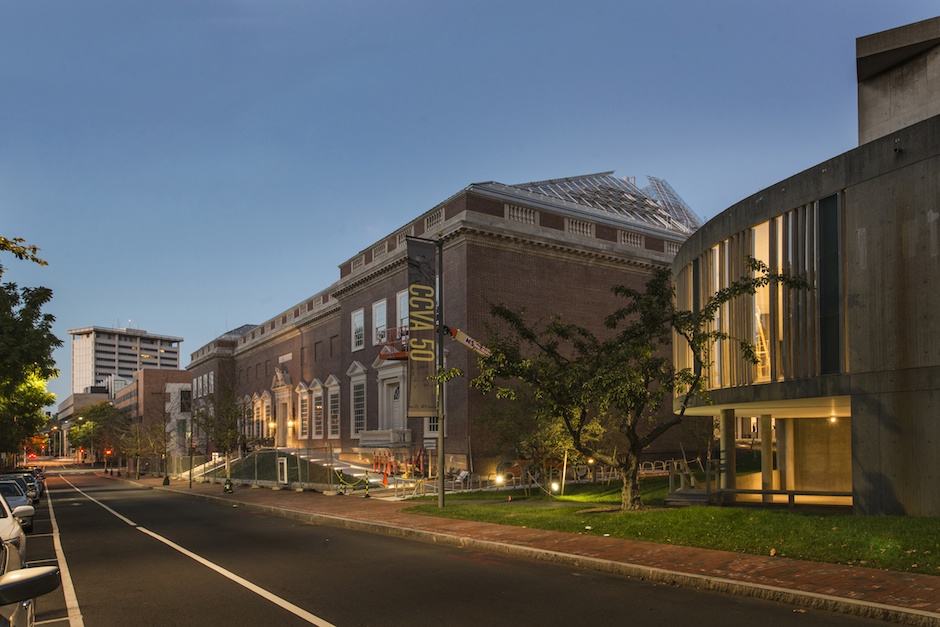
The Harvard Art Museums (October 5, 2014). Photo: Peter Vanderwarker.
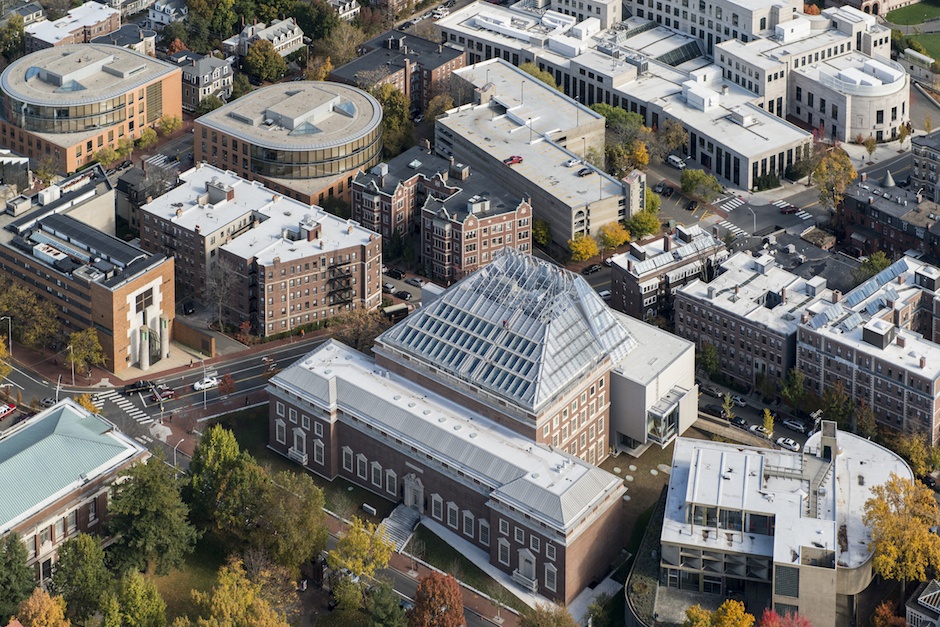
The Harvard Art Museums (October 30, 2014). Photo: Peter Vanderwarker.

The Harvard Art Museums, showing the glass roof over the Calderwood Courtyard (September 19, 2014). Photo: © Nic Lehoux.
Calderwood Courtyard: The new facility’s central point of circulation is revitalized with a glass rooftop and interior glass arcades on the upper levels that offer interior views throughout the five upper floors.
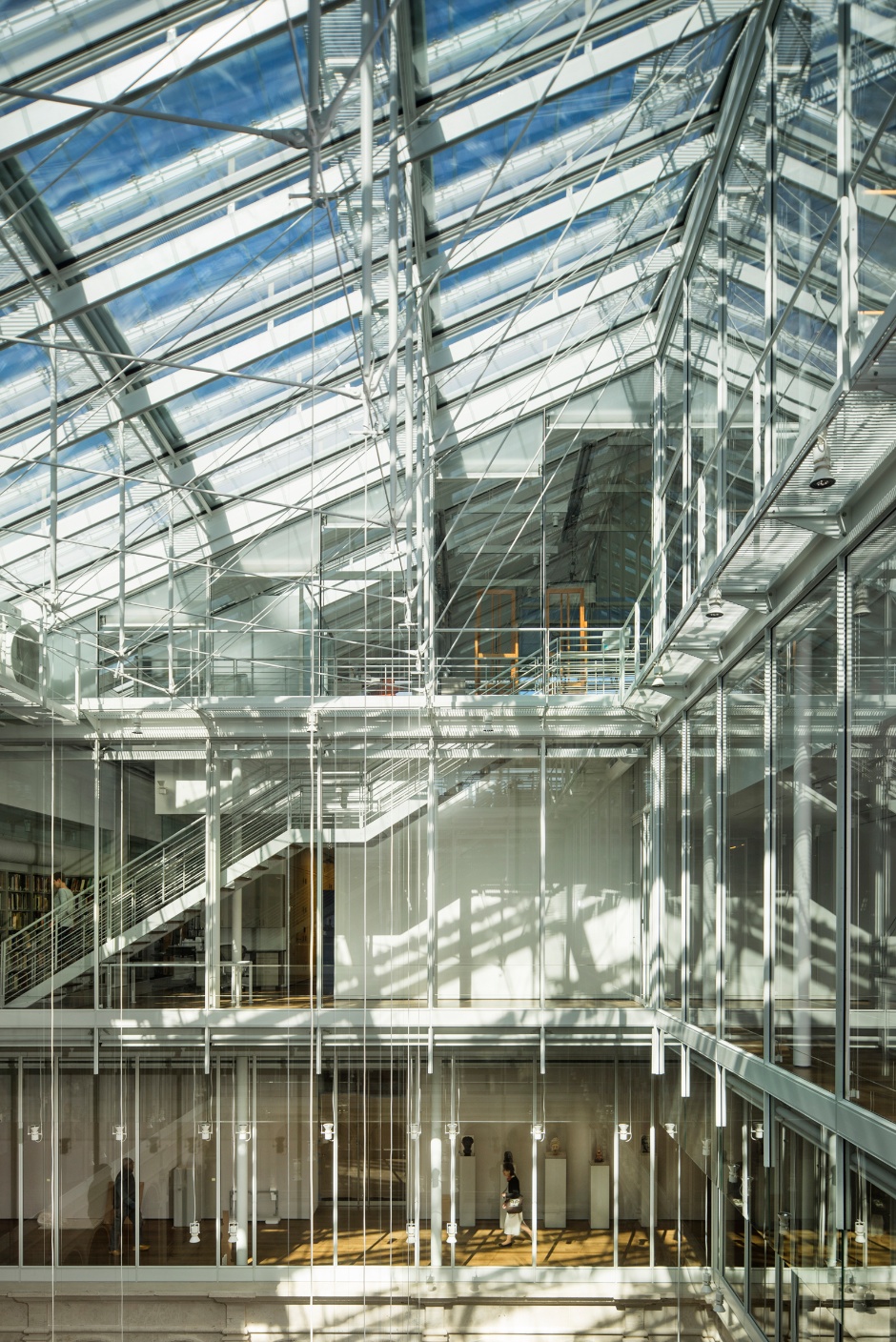
The Harvard Art Museums, showing the upper arcades around the Calderwood Courtyard and the glass roof (September 19, 2014). Photo: © Nic Lehoux.

The Harvard Art Museums, showing the upper arcades around the Calderwood Courtyard and the glass roof (October 16, 2014). Photo: Zak Jensen.
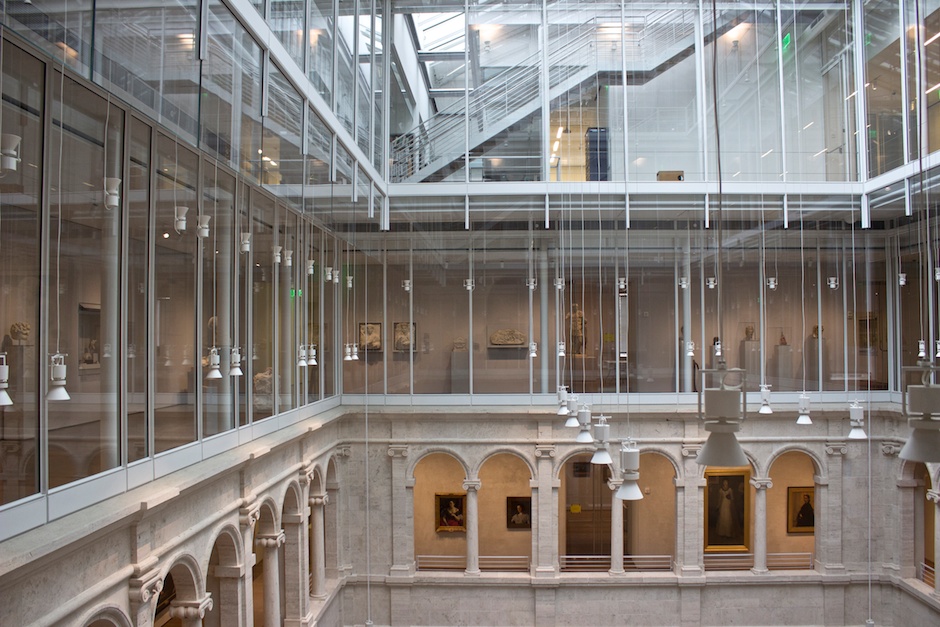
The Harvard Art Museums, showing the upper arcades around the Calderwood Courtyard (October 16, 2014). Photo: Zak Jensen.
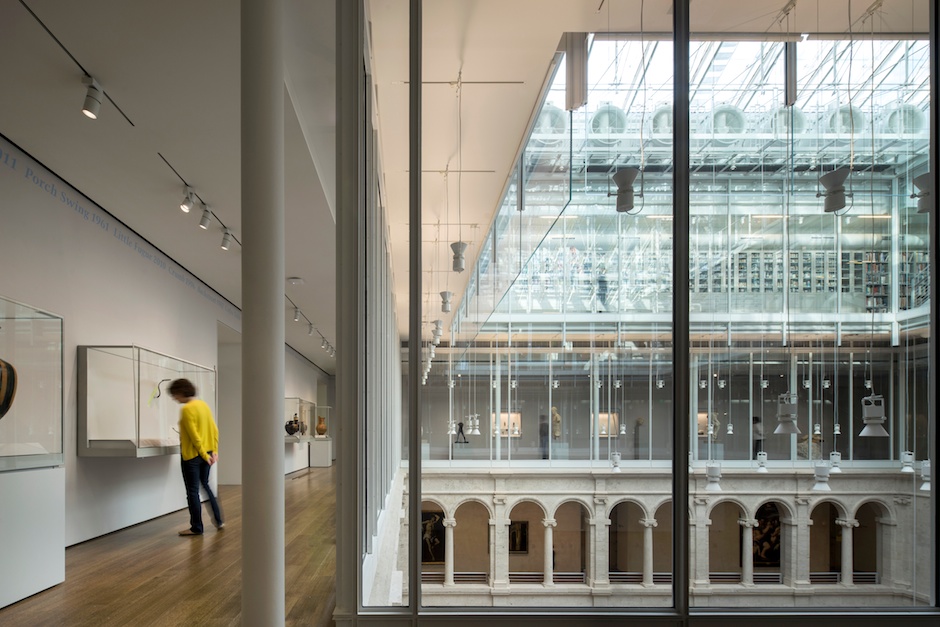
The Harvard Art Museums, showing the third-floor arcade overlooking the Calderwood Courtyard (September 18, 2014). Photo: © Nic Lehoux.
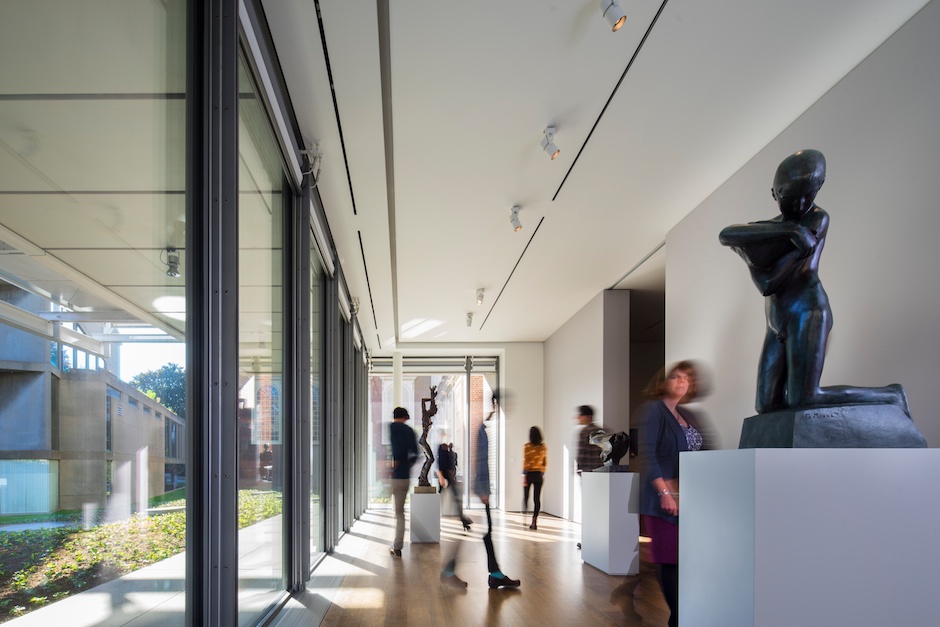
A gallery at the new Harvard Art Museums, with sculptures from the collection of the Busch-Reisinger Museum (September 19, 2014). Photo: © Nic Lehoux.
Exhibition Galleries: The project adds 12,000 square feet of exhibition space, for a total of 43,000 square feet. Expanded permanent collections and special exhibition galleries are complemented by University Galleries, programmed in consultation with faculty to support specific coursework. These University Galleries, which are open to the public, can also be used for curatorial studies and training or to provide additional space to support the Art Study Center.
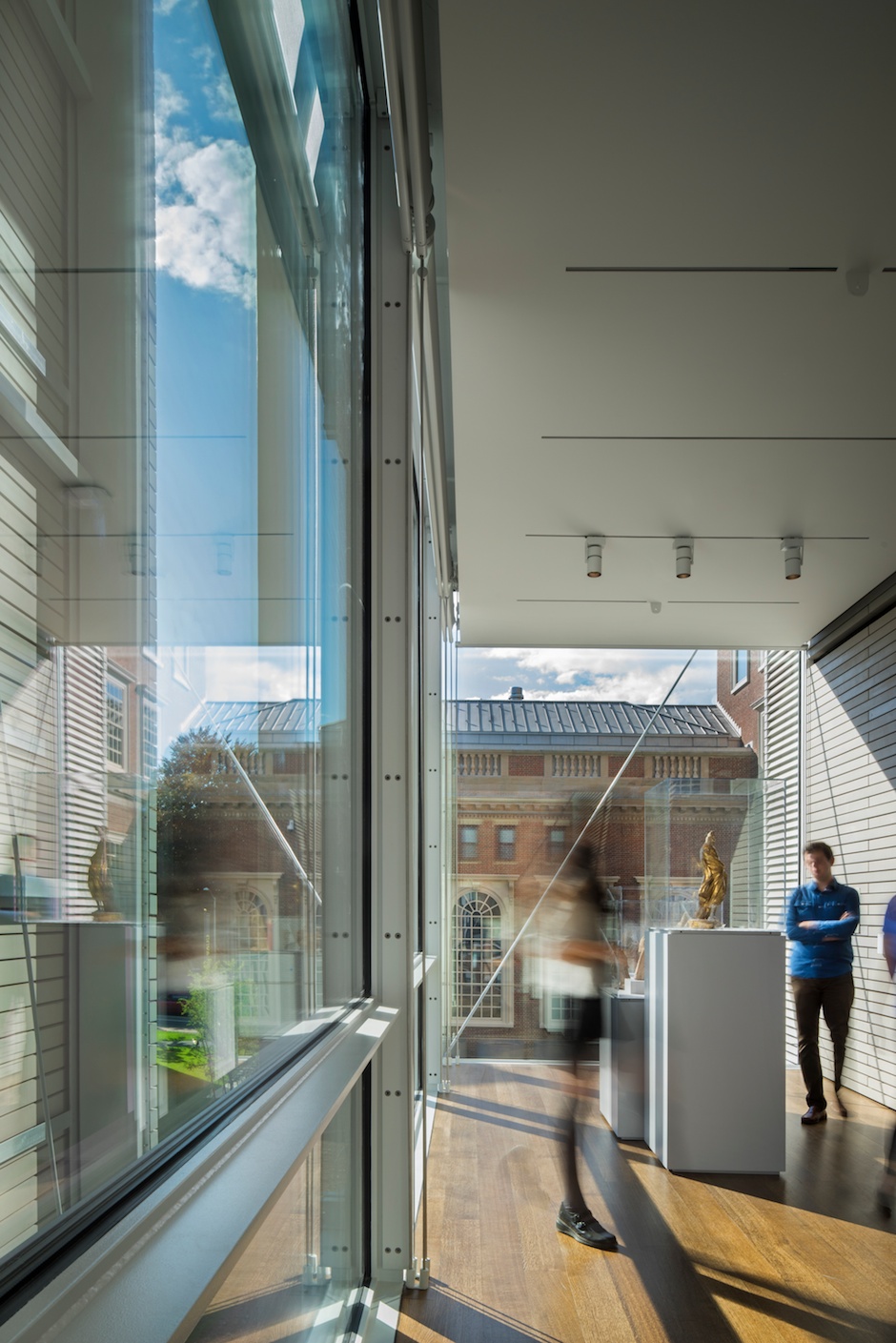
The Harvard Art Museums, showing an interior view of the south Winter Garden, a gallery featuring sculptures by Gian Lorenzo Bernini (September 18, 2014). Photo: © Nic Lehoux.
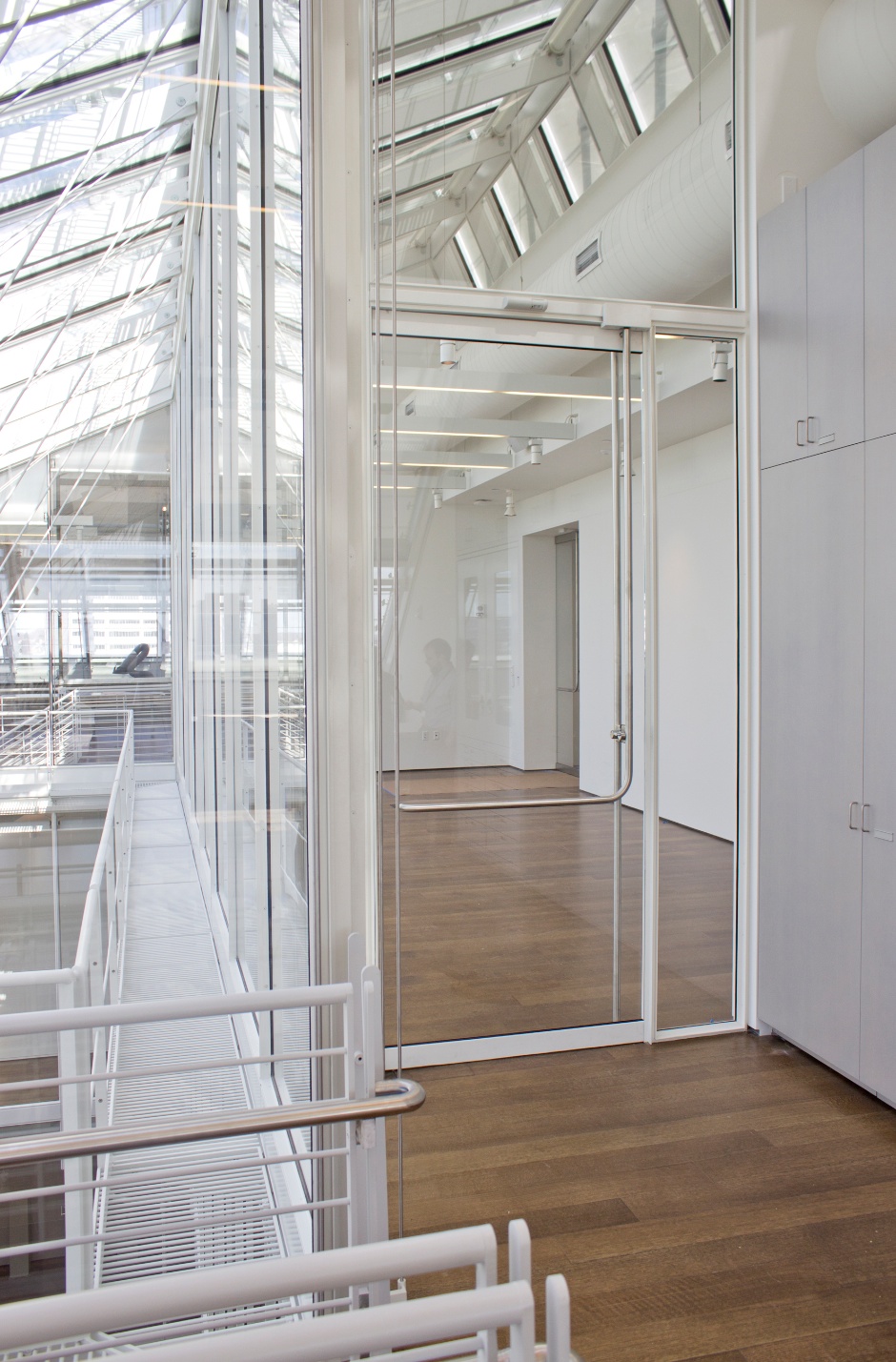
The Harvard Art Museums, during renovation and expansion, showing the Lightbox Gallery (April 3, 2014). Photo: Zak Jensen.
Lightbox Gallery: This new gallery space on the top level of the Harvard Art Museums showcases the collaboration with Harvard’s metaLAB to provide deeper content and meaningful experiences through technology. It also offers a unique perspective on key spaces and functions, from oblique views into conservation labs, to close-up perspectives on the technical aspects of the glass roof, including its louvers and shades, to a bird’s-eye view down through the building into the historic Calderwood Courtyard.
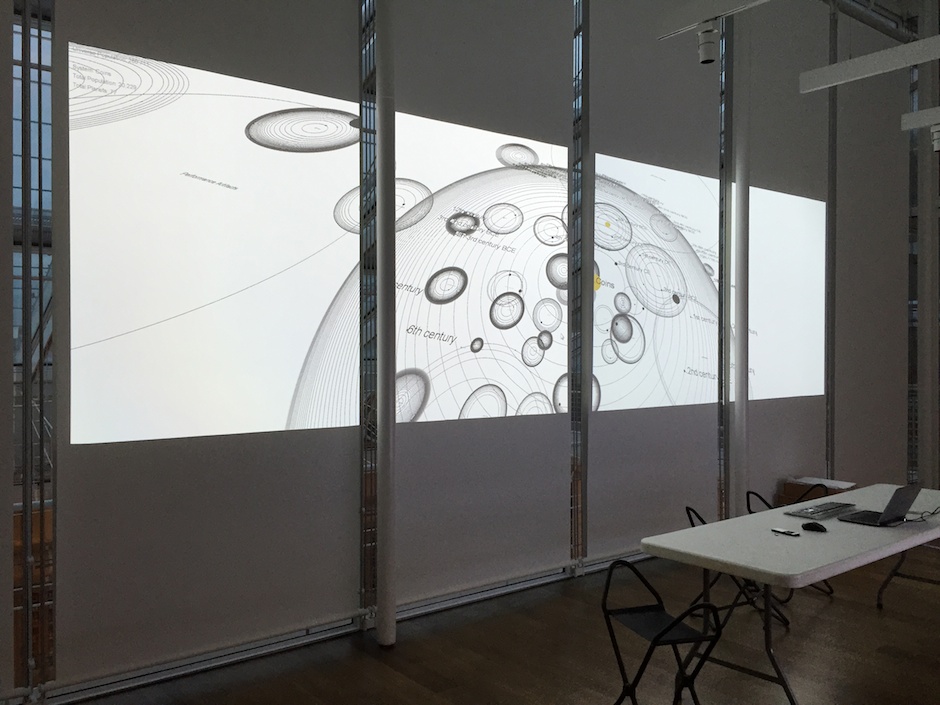
The Harvard Art Museums, showing the Lightbox Gallery (October 21, 2014). Photo: Jeff Steward.
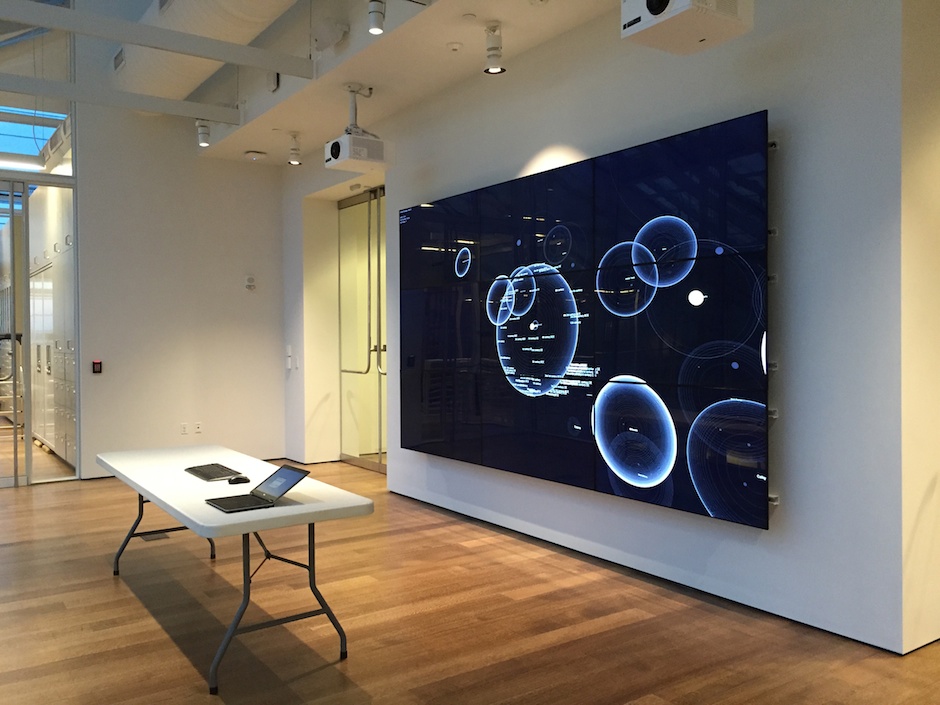
The Harvard Art Museums, showing the Lightbox Gallery (November 5, 2014). Photo: Jeff Steward.
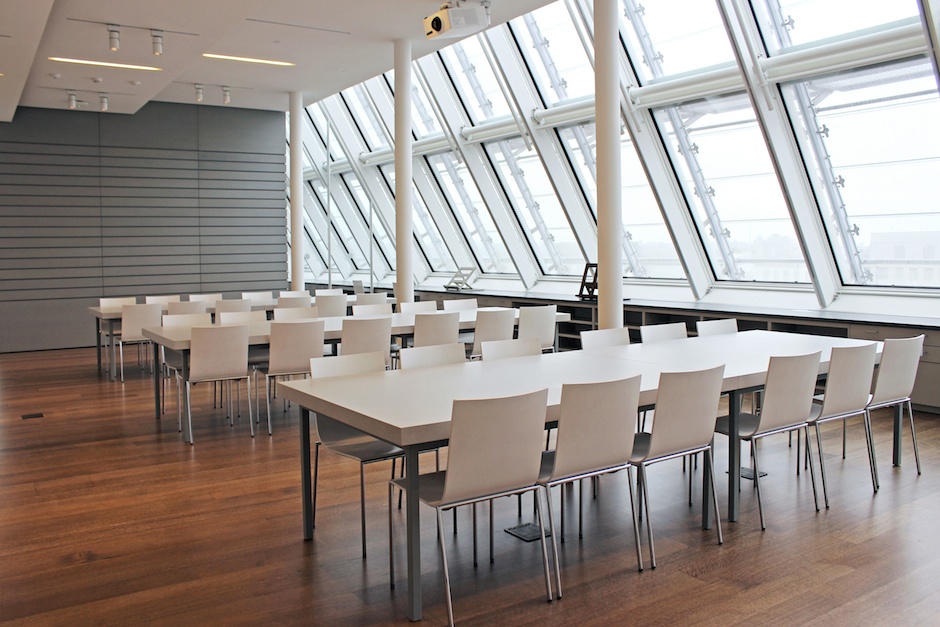
The Harvard Art Museums, showing the Art Study Center (October 2, 2014). Photo: Antoinette Hocbo.
Art Study Center: A central feature of the new facility, the Art Study Center provides distinct areas for study and research, offering students, faculty, and the public purpose-built environments for learning through the close examination of original works of art from the collections of the Fogg, Busch-Reisinger, and Arthur M. Sackler Museums.
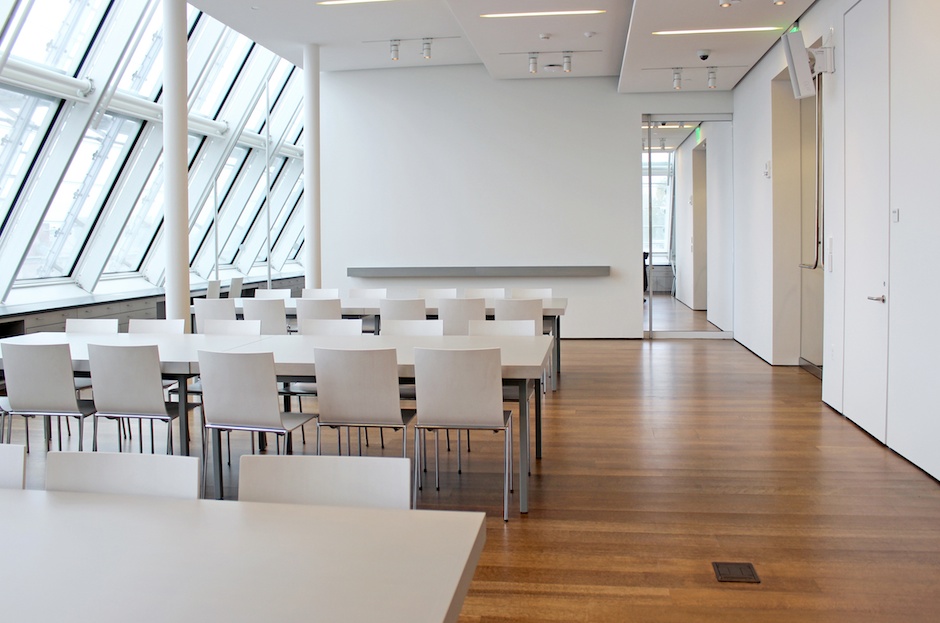
The Harvard Art Museums, showing the Art Study Center (October 2, 2014). Photo: Antoinette Hocbo.
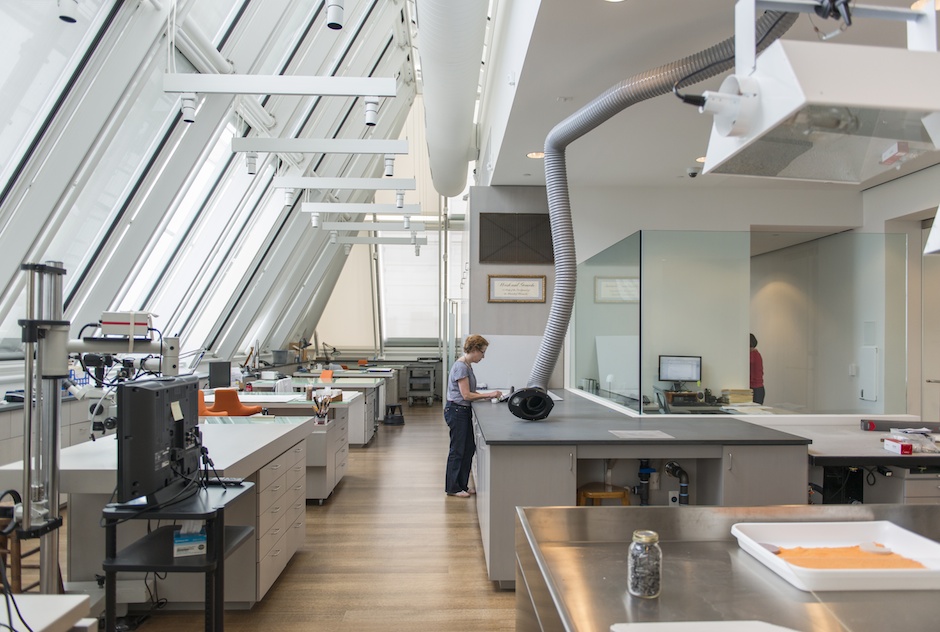
The Harvard Art Museums, during renovation and expansion, showing the Straus Center for Conservation and Technical Studies (July 24, 2014). Photo: Peter Vanderwarker.
Straus Center for Conservation and Technical Studies
The Harvard Art Museums’ Straus Center for Conservation and Technical Studies is the premier training ground for fine arts conservation and research. It plays a leading role both in the preservation of art and in the advancement of conservation science. The Straus Center supports the Harvard Art Museums by providing analysis of and treatments to the approximately 250,000 objects in all media in the museums’ collections, including objects from the ancient world to the present.
Founded in 1928 as the Department for Technical Studies in the Fogg Art Museum, the Straus Center was the first institution in the United States to use scientific methods to study artists’ materials and techniques. It has also been a pioneer in the application of scientific techniques to conservation.
The Straus Center is located inside the glass roof on the uppermost levels of the Harvard Art Museums’ new facility, in order to take advantage of the natural light needed for the center’s work. The glass walls of the center offer visitors to the museums a glimpse of the conservation and research activity taking place. The Straus Center’s fully equipped, state-of-the-art space supports a wide range of analytical instrumentation for quantitative and qualitative analysis of art media, including pigments, stone, ceramic, metals, paint binding media, and varnishes.
The Straus Center is a powerful resource for the Harvard Art Museums and for the university. Conservation professionals in the Straus Center teach courses in technical art history and support materials-based inquiry in courses across Harvard’s curriculum. In alternating years, the staff of the Straus Center teaches History of Art and Architecture 101, a course that considers issues related to the making of works of art and to their physical alteration over time. They also teach History of Art and Architecture 206, a course focused on the scientific investigation of works of art. Together with students, conservators and conservation scientists consider artists’ material choices, resources, constraints, and innovations, as well as the diagnostic tools used for description, dating, authentication, and conservation.
The Straus Center also serves as a leading institution for training the next generation of conservators. Since 1972, an advanced-level training program has offered three ten-month fellowships each year. The program provides training in the conservation of works on paper, paintings, and objects. Additionally, the three-year Andrew W. Mellon Postdoctoral Fellowship is designed to train conservation scientists.
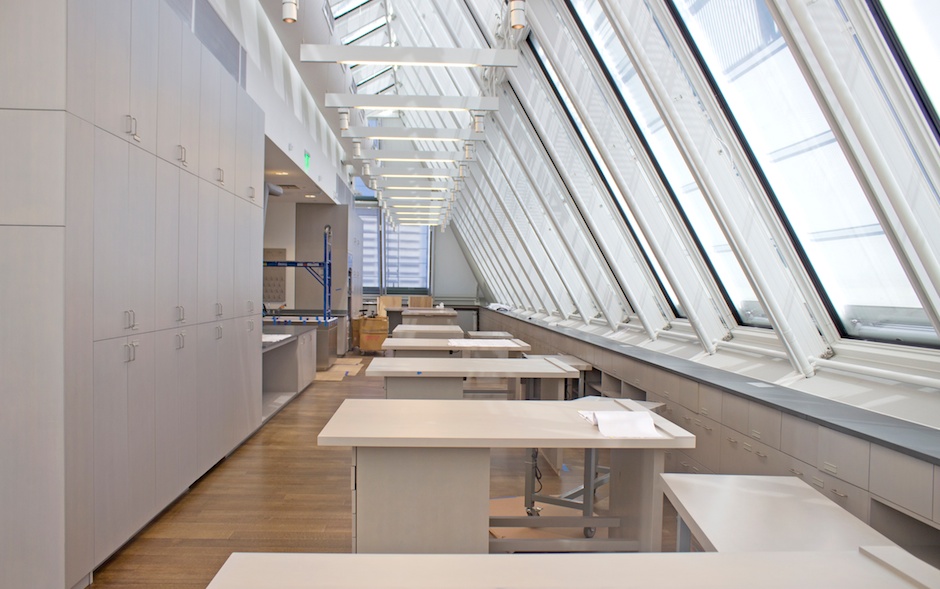
The Harvard Art Museums, during renovation and expansion, showing the Straus Center for Conservation and Technical Studies (April 3, 2014). Photo: Zak Jensen.
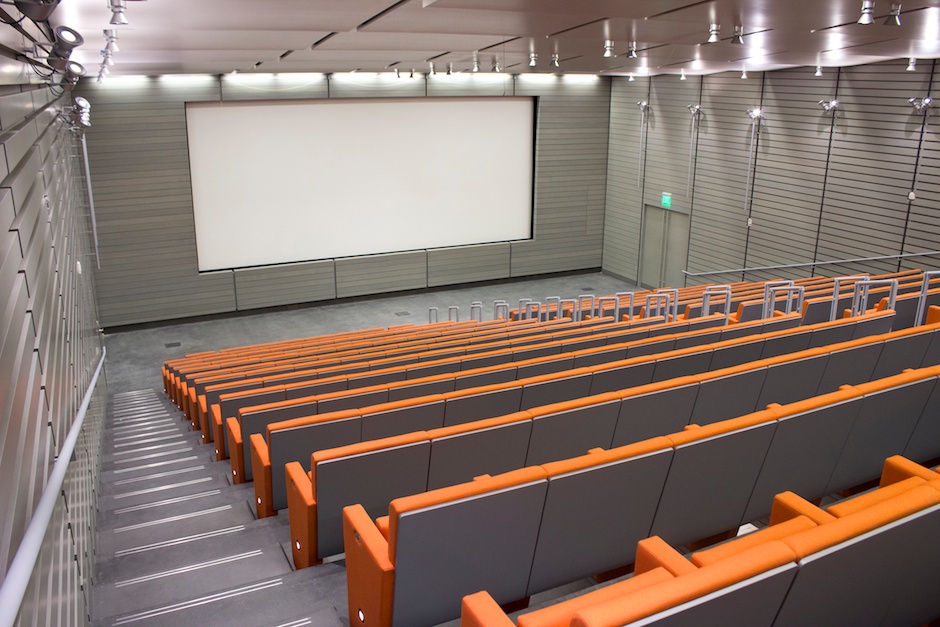
The Harvard Art Museums, during renovation and expansion, showing the 300-seat Menschel Hall (April 3, 2014). Photo: Zak Jensen.
Lecture Halls and Seminar Rooms: There is a 300-seat lecture hall and a 100-seat lecture hall for presentations, performances, and events on the new lower level. This and other lecture and classroom spaces are activated by Harvard faculty and students as well as through public programs and events.
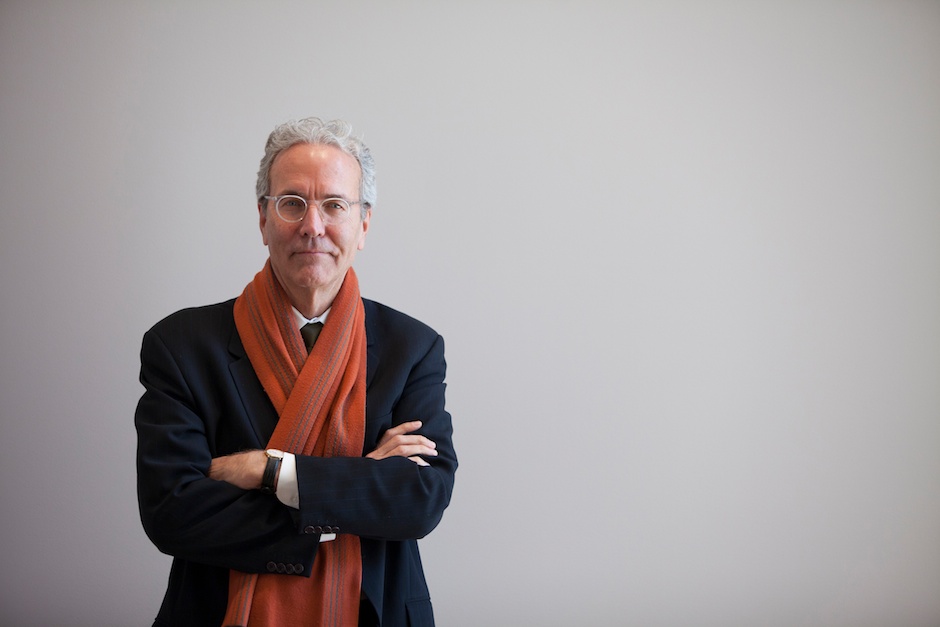
Thomas W. Lentz, Elizabeth and John Moors Cabot Director of the Harvard Art Museums (March 24, 2014). Photo: Stephanie Mitchell, © President and Fellows of Harvard College.
“We knew that we had an opportunity to redefine the Harvard Art Museums as an accessible and connected 21st-century facility for teaching and learning, so we engaged Renzo Piano Building Workshop to design a building to implement that vision,” said Thomas W. Lentz, Elizabeth and John Moors Cabot Director of the Harvard Art Museums. “We asked him to design it from the inside out—to create a new kind of laboratory for the fine arts that would support our mission of teaching across disciplines, conducting research, and training museum professionals.”
_____________________________________
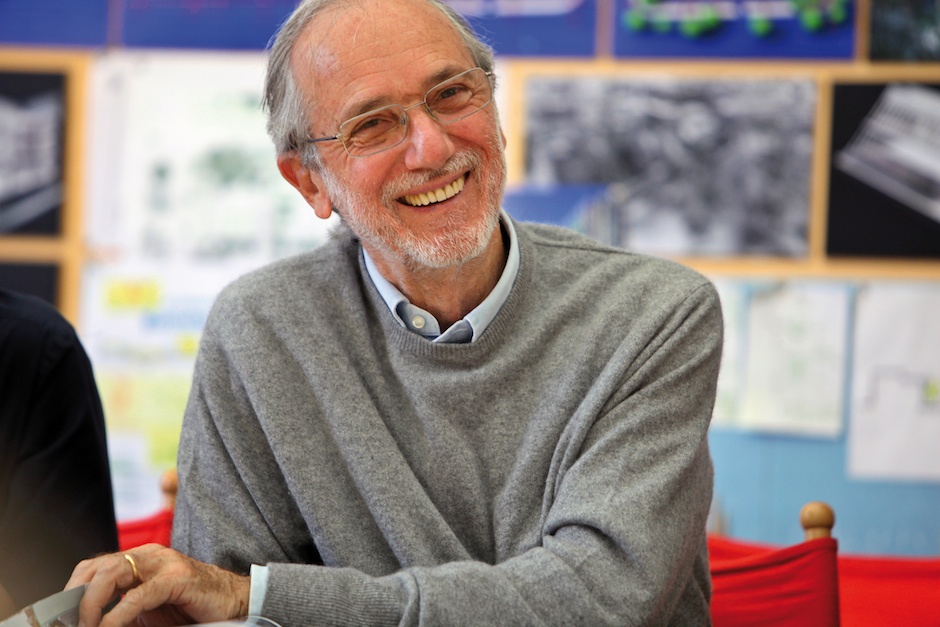
Portrait, Renzo Piano. © Renzo Piano Building Workshop. Photo: Stefano Goldberg, Publifoto.
“The Harvard Art Museums are university museums, a place to collect and exhibit art, a great workshop to study, in direct contact with the artworks. Show, preserve, teach. If I had to describe the new Harvard Art Museums in a synthetic image, I would say that the ground floor is urban, serving the city by providing life; the second and third floors are for the art and the people who come to know it; the fourth and fifth contain more specialized spaces for the students like the Art Study Center and the conservation lab. It is a stratification, an overlap of spaces and services that proceeds upwards towards more specialized functions. The hidden base of the museums’ machine is the storage, where the artworks are filed and protected from the effects of time; while the rest of the space, under the big glazed lantern, is open to the city and to the light.“
– Renzo Piano, Architect
Renzo Piano Building Workshop
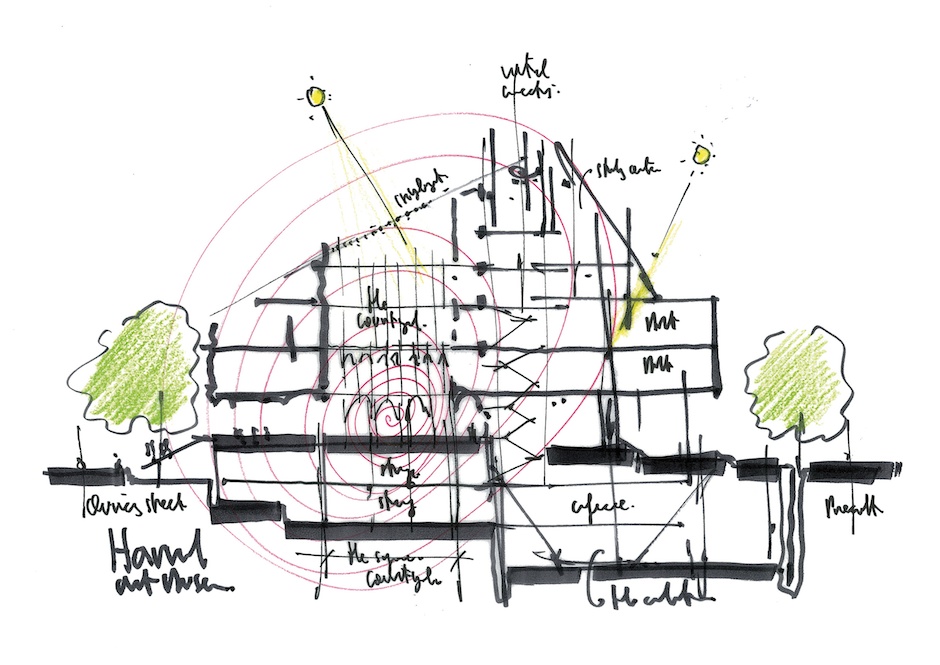
Harvard Art Museums renovation and expansion project. Renzo Piano’s sketch section. © Renzo Piano Building Workshop.
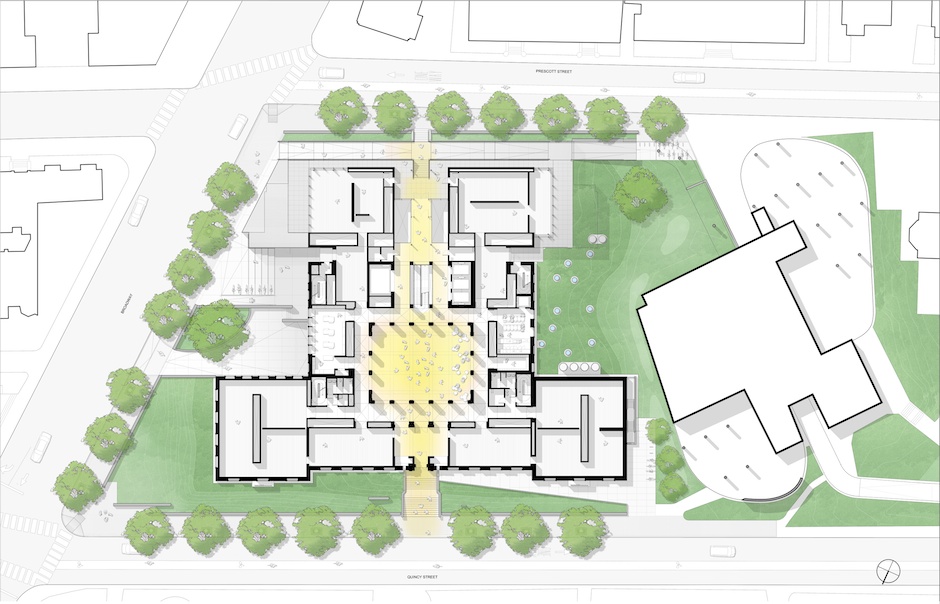
Harvard Art Museums renovation and expansion project. Plan Level 1. © Renzo Piano Building Workshop.
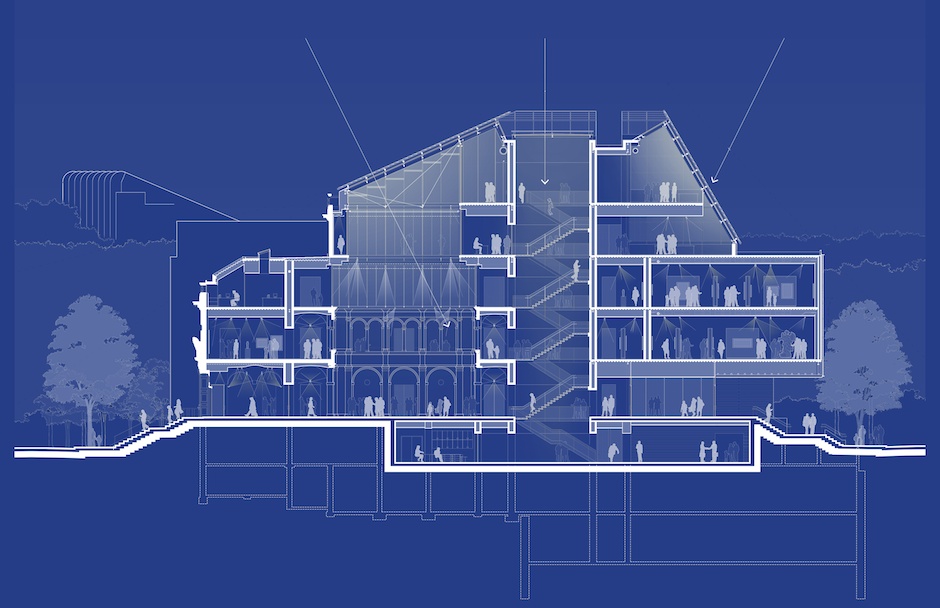
Harvard Art Museums renovation and expansion project. East West section. © Renzo Piano Building Workshop.
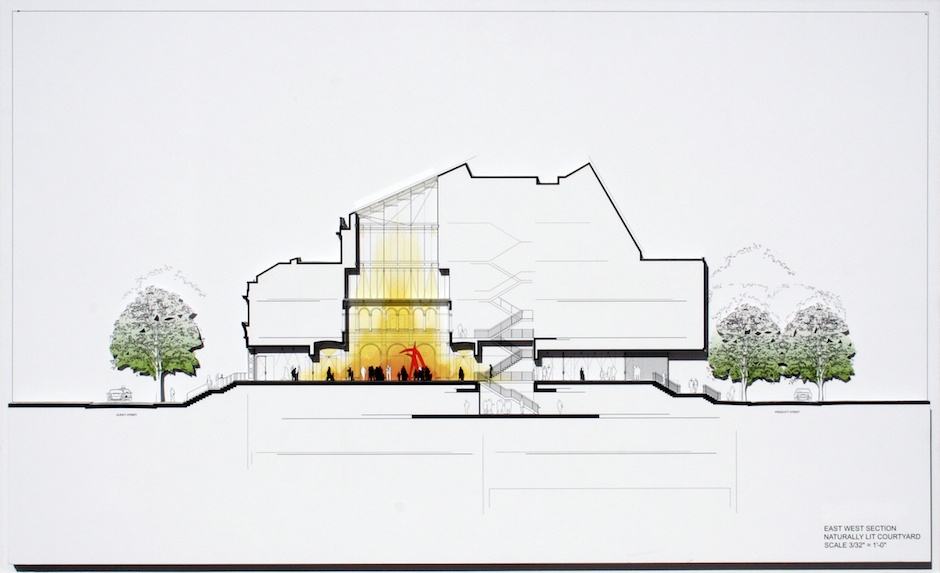
Harvard Art Museums renovation and expansion project. East West section, naturally lit courtyard. © Renzo Piano Building Workshop.
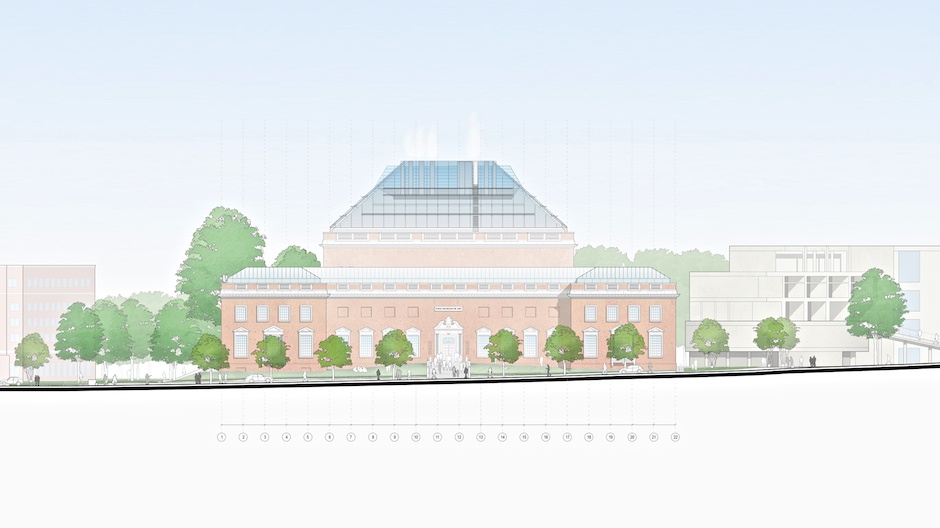
Harvard Art Museums renovation and expansion project. West Elevation. © Renzo Piano Building Workshop.
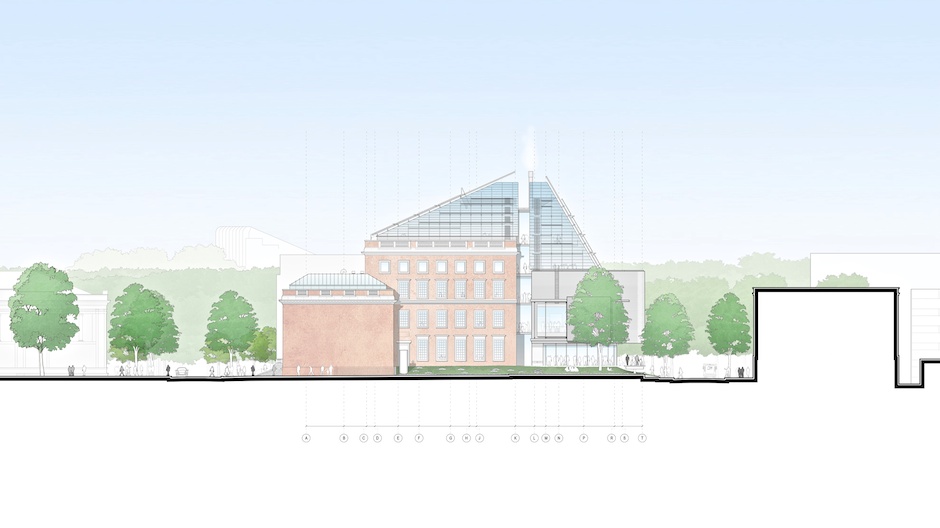
Harvard Art Museums renovation and expansion project. South Elevation. © Renzo Piano Building Workshop.

Harvard Art Museums renovation and expansion project. East Elevation. © Renzo Piano Building Workshop.

Harvard Art Museums renovation and expansion project. North Elevation. © Renzo Piano Building Workshop.
————————————-
Renzo Piano Building Workshop in collaboration with Payette
Design Team
M. Carroll and E. Trezzani (partners in charge) with J. Lee, E. Baglietto (partner), S. Ishida (partner), R. Aeck, F. Becchi, B. Cook, M. Orlandi, J. Pejkovic, A. Stern, J. Cook, M. Fleming, M. Palacio, S. Joubert; M. Ottonello (CAD operator); F. Cappellini, F. Terranova, I. Corsaro (models)
Consultants
Robert Silman Associates (structure); Arup (MEP engineering, lighting design, facade engineering, code consulting, LEED consulting); Nitsch Engineering (civil engineering); Anthony Associates (wood
scientist); Davis Langdon (cost consultant); Sandy Brown Associates (acoustics); Carl Cathcart (arborist); Building Conservation Associates (restoration consultant)
Total Square Footage: 204,000 square feet
Materials
– 1,800 tons (3,600,000 lbs.) of structural steel
– 850,000 lbs. of concrete
– 8,750 wood timbers
– 320 insulated glass panes
– 130 fixed shades
– 150 operable exterior shades
– 176 operable interior shades
– 1,800 louvers
Sustainability
The project is designed to follow Harvard University’s sustainability initiatives, with the goal of obtaining LEED Gold Certification. Key elements include:
– Reusing existing spaces, among them the original facade of the 32 Quincy Street building;
– 16.9 percent energy reduction by introducing new design and operation strategies, building materials, and energy-efficient HVAC equipment;
– Procuring 35 percent of electricity needs through the purchase of Renewable Energy Certificates;
– Water reduction strategy in which rainfall on the building’s roof and landscapes is collected in underground storage tanks to supplement restroom flush and flow fixtures;
– Developing an Indoor Air Quality (IAQ) Management Plan for, during, and after construction;
– Selecting regionally and responsibly harvested materials, including building materials extracted and manufactured within 500 miles of the site, and wood certified by the Forest Stewardship Council (FSC); and
– Diverting over 97 percent of construction waste, thereby reducing the impacts on local landfills and promoting material reuse.
Project Funding To Date: the Harvard Art Museums have raised over $250 million for the project. Leadership philanthropic investments have been made by many significant, long-time benefactors of Harvard, including Emily Rauh Pulitzer and Joseph Pulitzer, Jr., David Rockefeller, Richard and Ronay Menschel, and the Calderwood Charitable Foundation, among many others. Recent support for the museums’ Art Study Center includes a $5 million gift from Nancy A. Nasher and David J. Haemisegger to name the Fogg Museum space, a $5 million gift from the German Friends of the Busch-Reisinger Museum to name the Busch-Reisinger Museum space, a $2 million gift from Robert and Betsy Feinberg to name the Arthur M. Sackler Museum space, and a $3 million gift from Marguerite Steed Hoffman to name the Art Study Center reception area. Other support includes a $1 million gift from Eijk and Rose- Marie van Otterloo to name the 17th-century European and American art gallery that houses Dutch and Flemish paintings, prints, and drawings, among other important works; and two gifts totaling $1.5 million from Lois Pattison de Menil and George de Menil: one to name the Winter Garden gallery where the museums’ collection of Bernini terracotta models is displayed, and another to establish an endowment to support curatorial excellence at the museums. The project has also received support from the Massachusetts Cultural Facilities Fund, a state-funded agency, in recognition of the project’s value as a new public education resource. All funds contributed have been dedicated either to capital costs for construction and renovation or to building the endowment for operating costs.
___________________________
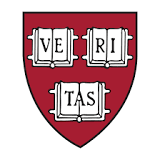
HARVARD ART MUSEUMS
www.harvardartmuseums.org
—————————————–
Content courtesy of Harvard University.
—————————————–
Visit these AAQ Museum Architecture Portfolios (links)
Glenstone, Potomac, Maryland / 2006 – 2008
MAD — Museum of Arts and Design, NYC / 2016
Parrish Art Museum, Water Mill, NY / 2012
The Clark Institute of Art, Berkshires / 2014
The Morgan Library & Museum, NYC / 2006
Wadsworth Atheneum Museum of Art, Hartford / 2017
Whitney Museum of American Art, NYC / 2015
Yale University Art Gallery, New Haven / 2012
_______________________________________________

